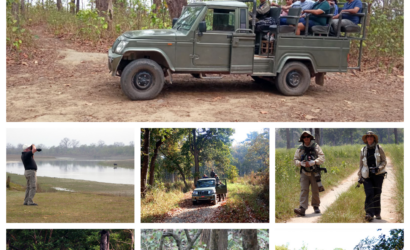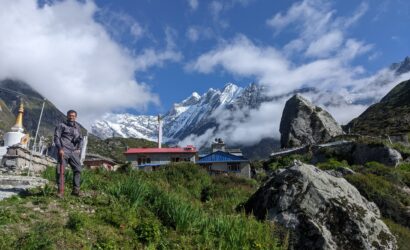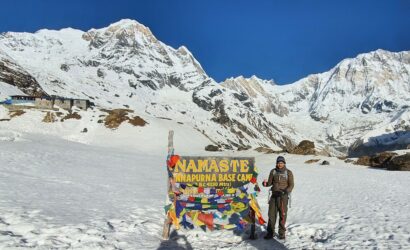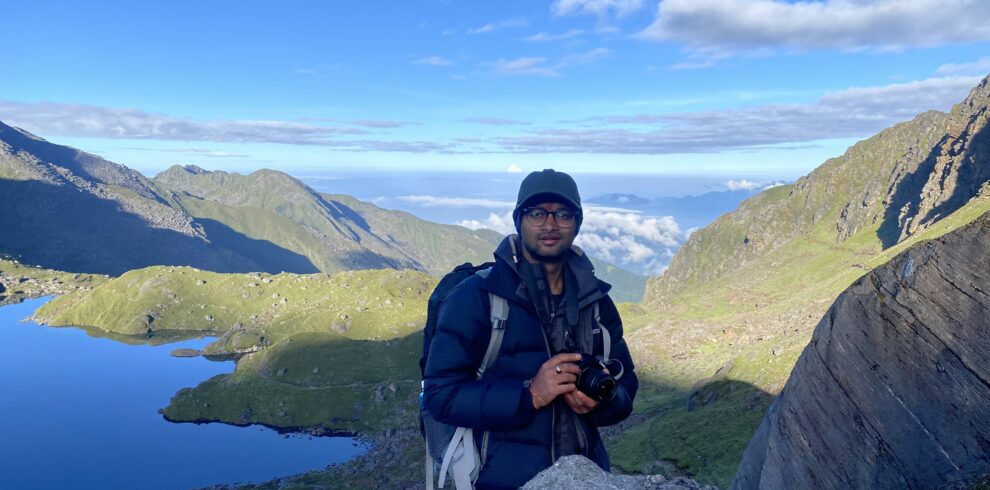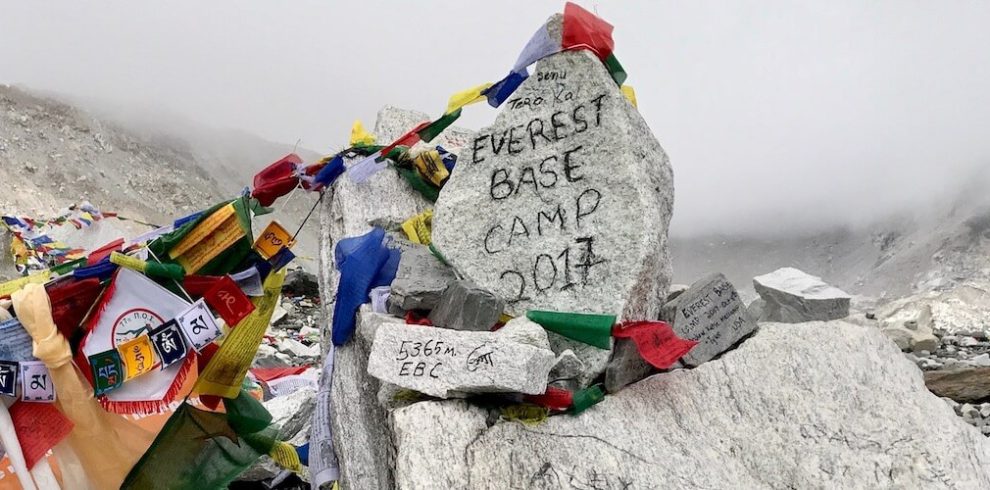- English, Spanish, French, Chinese
- 3 Star Hotel, TeaHouse
- TIMS Card
- Mar, Apr, May, Sep, Oct, Nov
- Moderate to High
- 2-10
- Private Jeep
- 4610 Meter
Overview
The Langtang Trek is a popular and scenic trekking route located in the Langtang region of Nepal. It offers breathtaking views of the Himalayas, diverse landscapes, and rich cultural experiences.
Highlights
- The trek offers awe-inspiring views of snow-capped peaks, including Langtang Lirung (7,234 m), Dorje Lakpa (6,966 m), and Ganesh Himal (7,422 m), among others.
- The region is a part of Langtang National Park, known for its diverse flora and fauna, including rhododendron forests, bamboo groves, and wildlife like the elusive red panda.
- The trek typically culminates at Kyanjin Gompa, a Buddhist monastery situated at an altitude of 3,870 meters. This is a spiritual and scenic highlight of the journey.
- Traditional Tamang & Sherpa Villages
- Kyanjin Gompa, a Buddhist monastery situated at an altitude of 3,870 meters.
Itinerary
Arrive in Kathmandu, the capital city of Nepal. Meet your trekking guide and fellow trekkers for a pre-trek briefing and orientation. Get familiar with the trek details and necessary preparations.
Drive from Kathmandu to Syabrubesi, the starting point of the Langtang Trek.
The drive takes approximately 6-7 hours, passing through picturesque landscapes and local villages.
Overnight stay in Syabrubesi.
We have two options to start our trip, One way starts from Pairo to Bamboo to Pairo & Rimche, Another way is via Sherpa Gau. Looking at the weather condition we choose the best way. The first alternative is short in duration with dense forest walk and little bit of landslide areas, whereas the other way is easy but takes little more time. With both the alternative we reach to Rimche & overnight stay at Rimche
Continue your trek with a trail that offers stunning views of the surrounding mountains.
Pass through Ghoda Tabela (Horse Stable) and observe the changes in the landscapes as you ascend.
Reach Langtang Village, a traditional village with a Tibetan influence.
Overnight stay in Langtang Village.
Today's trek takes you through yak pastures and across the beautiful Langtang River.
As you approach Kyanjin Gompa, you'll be rewarded with spectacular views of Langtang Lirung and other peaks.
Visit the Kyanjin Gompa monastery and enjoy the serene surroundings.
Overnight stay in Kyanjin Gompa.
Use this day to acclimatize to the higher altitude.
Optionally, you can hike to the nearby Tserko Ri (4,984 m / 16,352 ft) for breathtaking panoramic views of the Langtang range.
Explore the local cheese factory and experience the unique lifestyle of the locals.
Overnight stay in Kyanjin Gompa.
Begin your descent back towards Lama Hotel.
Follow the same trail, enjoying the familiar views in reverse.
Overnight stay in Lama Hotel.
Continue your descent, passing through lush forests and charming villages.
Reach Syabrubesi, where you can relax and celebrate the successful completion of your trek.
Overnight stay in Syabrubesi.
Drive back to Kathmandu from Syabrubesi.
Transfer to your hotel in Kathmandu.
Take some time to rest and explore the city.
Overnight stay in Kathmandu.
After breakfast, take ur flight to Home.
Cost
The Cost Includes
- Pick-up or Drop-off service from and to Airport(in our own vehicle)
- Transportation to and from!!
- Food all along the trip(Breakfast, Lunch, Dinner and a cup of coffee or tea) and accommodations during the trip in hotels with family environment
- Transportation, food, accommodation and insurance of Guide during the trip
- Down jacket, all-season sleeping bag, duffel bag and trekking map(in case if you don’t have your own. Down jacket, sleeping bag and duffel bag must be returned after completion of the trip)
- First Aid Medical Kit(Your guide will carry the Medical Kit but we also advise to bring yourself for your own use, as far as possible)
- All the required permits and paperwork
The Cost Excludes
- International Airfare
- Visa Charges
- Hotel Expenses(In Kathmandu, some packages do include hotel expenses)
- Your travel and medical insurance
- Personal Expenses such as shopping, bar bills, hot shower, telephone, laundry, titbits etc
- Food and accommodations in Kathmandu
- Services not mentioned or not promised by the agent/agency
- Emergency expenses such as expenses on chartered helicopter.
FAQs
While prior trekking experience can be helpful, it is not a strict requirement. The Langtang Trek is considered a moderate-level trek, and with a reasonable level of fitness and preparation, most people can complete it successfully. Regular exercise, including hiking or walking, before the trek can be beneficial.
The best time for the Langtang Trek is during the spring (March to May) and autumn (September to November) seasons. These months offer stable weather conditions, clear skies, and pleasant temperatures, making for an enjoyable trekking experience.
Yes, you will need two permits for the Langtang Trek: the Langtang National Park Entry Permit and the TIMS (Trekkers’ Information Management System) card. These permits can be obtained through registered trekking agencies or at the Nepal Tourism Board office in Kathmandu.
Along the Langtang Trek, there are teahouses and lodges available for accommodation. These teahouses offer basic amenities like a bed, blanket, and meals. The quality of facilities may vary, but you can expect simple and comfortable lodging during your trek.
The Langtang Trek involves walking for several hours each day in varied terrain, including ascents and descents. A reasonable level of fitness is necessary to enjoy the trek comfortably. Regular exercise and cardiovascular training before the trek can help prepare your body for the physical demands of the journey.
It is not advisable to drink tap water during the trek, as it may not be safe. Bottled water is available at teahouses, but to minimize plastic waste, it is recommended to carry water purification tablets or a water filter and refill your water bottles from natural water sources after treating it.






